|
|
|
|||
|
|
|
|
Modeling-ABC by Wilfried Eck |
|
|
Markings of US NAVY Carrier Aircraft
Part II - 1942 - 1944
|
The war in Europe and first own war experiences quickly lead to the realization that the previous appearance of airplanes no longer meets the requirements of modern warfare. |
|
|
|
||||||||||||
|
|
|
|
||||
|
Historical background: In spring 1942 Japan held a vast territory. East China, Indochina and Burma, the Philippines, New Guinea and vast parts of the Pacific. From Guadalcanal in the Solomon islands chain it was just a small step to Australia (the next Jap. target). May 6th - 8th 1942: The battle of Coral Sea (north east of New Guinea) marks a turning point in sea warfare as it was entirely fought by aircraft carrier forces, the ships not seeing each other; Jap. carrier Shokaku damaged, American CV-2 Lexington sunk. Supremacy of Japanese aircraft obvious. June 4th 1942: Battle of Midway. due to a great portion of luck Japanese carriers Akagi, Hiryu, Soryu and Kage were sunk. Also most of the well trained and battle experienced Japanese pilots were lost. The Japanese expansion plans became obsolete. On the American side only CV-5 Yorktown was lost. Beginning of the fight for liberation of Guadalcanal in the Solomon islands. 1943 I: The fight for Guadalcanal and the Solomons goes on. In battles at land, sea and in the air the Allied forces repelled Japanese counter attacks and at last gained control over the whole Solomon islands in autumn 1943. The supremacy of Japanese aircraft was countered by tactics, additionally due to the flimsy construction of Japanese aircraft Japan again lost many of it's remaining first class pilots. 1943 II: Nov. 1943 - Feb. 1944 Gilbert and Marshall Islands campaign. First amphibious landing on Tarawa, Majuro-atoll first replenishment base for aircraft carriers. 1944 is dominated by the American counteroffensive. Constant commissioning of new aircraft carriers. Capture of bases which serve as a base for further advance. Preparation and support of the landing companies of the US Marine Corps by aircraft carrier units. 19/20.06.1944 Battle of the Philippine Sea, de facto end of the Japanese Navy Air Force. In October landing operations in the Philippines, first Kamikaze (see own page).
US carrier forces relied on three kinds of aircraft carrier:
Time of carrier deployment differed greatly, ranging from half a year to some weeks. Furthermore embarked squadrons may have had had different times of assignment. For example squadrons on board CV-10 Yorktown: VF-5, 09-12/1943; VF-5, 01-02/1944; VF-1, 05-06/1944; VF-3, 01/1945; VF-9, 03-04/1945; VF-88, 06/1945. For modellers: There wasn't much time for "ageing" and in case of an emergency US Army airfields (New Guinea area) were too far away , others occupied by decidedly unfriendly people. In short: The aviator (the USAAF had pilots) got wet.
|
| Generally speaking, the appearance of US Navy aircraft was strongly influenced by the main weapon, the aircraft carrier. The color scheme and markings were related to the requirements of the carrier and the operation at sea. Since the value of an aircraft carrier was determined by the number of aircraft it was able to bring into service, but lacking the parking space of an airfield, aircraft had to be tightly packed. To make it easier for pilots to find their assigned aircraft, its number was often repeated in other places (usually the engine cowling and landing gear doors). The introduction of folding wings did not change this, as they were only used to increase the number of aircraft to 90 and more. A single aircraft with wings folded out but without a pilot was therefore not visible on board a carrier. |
| A pre-war squadron consisted of 18 aircraft, later variable in size up to 30. The superior unit was the Air Group. |
| The first war experiences soon showed that the pre-war identification system was no longer up to date and a two-plane formation was much more practical than the former three-plane one. |
National Insignia:
| Identification Markings: | ||||
|
The first and
not very pleasant encounters with the opposite side showed on the one hand
how much the technical skills of Japanese constructors and the ability of
the pilots had been underestimated, but on the other hand also that the
pre-war system of license plates could not remain like this.
See below for details: |
|
|
|
|
|
Standard markings at the beginning of the war,
12.07.1941:
|
|
|
04/29/1942:
Squadron number (i.e. 6) deleted. As the national insignia had to be as
large as possible (see left) sometimes applied after
the national insignia. On squadron level: Number on the rear of the wings is
omitted.
|
|
|
Autumn 1942:
Numbering determined by the squadron, white numbers, size variable.
Sometimes with an additional letter (e.g. VT-25 on CVL-25 Cowpens) meaning
only known to the squadron. The previously specified location in front of the national emblem is no longer considered mandatory. |
|
|
Aug.
31,
1943: First inofficial
geometric marking on the vertical stabiliser of carrier aircraft. Solely on
squadron level (at left Hellcat of VF-5). Whether one followed the
trend or not was entirely up to the commander's decision.
|
|
|
Jan.
26,1945:
Geometric signs on the tailplane now official, assigned by the BuAer to each
aircraft carrier. All aircraft of the carrier carry the same marking (at
left CV-17 Bunker Hill with Air Group 84). Numbering now also visible in blocks, e.g. 100+ fighters, 200+ torpedo bombers, 300+ dive bombers. |
|
| Tail Markings, "G-Symbols": | ||||||
|
In August 1943 the first operational F6F-3 Hellcats embarked with VF-5 aboard CV-10 Yorkwown showed a white oblique stripe one the vertical tail. Not leading upwards from front to rear (the common aid for the landing signal officer), but canting down. A pure squadron marking without any official approvement. But somehow the idea stuck, VF-2 on board CV-2 Hornet followed with a white dot, "Essex"-based aircraft used a thin horizontal line. But beware! These markings were not assigned to a certain carrier! Application was entirely in the decision of the Squadron- or Air Group commander. So well into 1944 some units had no such insigina, whereas others were more inventive. Why such markings though off limits were tolerated by the Navy may have had practical reasons. As more and more carriers appeared, being grouped in so called "Task Units" and "-Groups" chances rose that single aircraft joined the wrong formation. This was especially important after the attack, as a pilot landing on the wrong carrier had to endure some roguish treatment on the one he landed on and on his home carrier after his return as well. So a formation aid was needed, the "G-Symbol" acting as a "club logo". In example during the operation "Galvanic", occupation of the Gilbert Islands from 11/13 - 12/08/1943, 19 aircraft carriers were involved (6 fleet carriers, 5 light carriers and 8 escort carriers). Contrary to some publications these tail markings said nothing about the affiliation to a certain carrier. They were the markings of a specific squadron. Whether other squadrons on board followed or not was their decision. As "G-Symbols" were invented on squadron level without official approvement they followed the squadron when it was assigned to another carrier (i.e. VF-20 from "Enterprise" to "Lexington"). Furthermore a carrier could show one squadron with a tail marking while the other wasn't decorated this way: While the Avengers of the VT-19 showed an upside down triangle, the Hellcats of the VF-19 were satisfied with a small number behind the cockpit. Also on CVL-23 "Princeton" and CVL-28 "Cabot" markings of VF- and VT- aircraft differed. SBD Dauntlesses - if embarked - generally did not use such a marking, the only exception being Air Group 1 on board CV-10 "Yorktown" 6/1944. Last not least "G-Symbols" weren't constant. When assigned to CV-10 Yorktown VF-1 adopted the oblique stripe of VF-5, but added the letter "K" (reason unknown). On CVL-28 the G-Symbol of VT- 31 in 7/1944 was quite different to that of VF-29 seen 10/1944. On Escort Carriers a wealth of tail markings could be seen. In January 1945, a new system established by the Bureau of Aeronautics was mandatory for all Pacific aircraft carriers (to be seen in the 1945 page). Last but not least (for modelers): For carrier aircraft, there was only one emergency landing site on land: the newly conquered Tacloban airfield on the Philippine island of Leyte, at the end of October 1944. And this only for the FM-2 Wildcats and TBM Avengers of the escort carriers hit by Kamikazes. In all other cases before and after, if you didn't make it back, you had to go into the water. Pofiles at the end of this page show when and how "G-Symbols" were used 1943-1944.
|
|||||
| Atlantic: | ||||||
|
Escort carrier
aircraft for submarine hunt in the South Atlantic operated alone,
accordingly all US airplanes in its vicinity were from the own unit. A
recognition symbol was not required.
|
|||||
| Other inscriptions: | ||||||
|
Aircraft with letter+number identification
(at left "R18") were stationed on land at a Naval Air Station (NAS). If seen
on board a carrier, either only briefly for training purposes or - as in the
case of the CVE-107 "Gilbert Islands" - to replenish a shortfall in the
onboard squadron with a prompt overpainting of the
NAS identification.
* Standard letters: "F" Fighter, "T" Torpedo Bomber, "S"
Scout-Dive Bomber", "B" Bomber (for SB2C instead of S) |
| Personal Decorations, Nose Art: | ||||||||||
|
The question why the US Navy did not have colorfully painted aircraft
with names or other inscriptions is easily answered: Every plane of a
squadron belonged either to nobody or to everybody. In the Navy it was
considered state property and what you don't own, you are not allowed to
paint. Because nobody had a personal machine, personal decoration was not
possible and moreover forbidden. Photos of David McCampbell's "Minsi III" and others by no means contradict this. Here a press campaign for the sale of so-called "War Bonds" was in the background. The planes were therefore supposed to suit the supposed taste of the audience. Another category is aircraft where names or decorations were only attached for photo shoots, but then removed again. That this was the case is not apparent from the photos. How a press photo was taken is best shown by the photograph of Maj. Gregory "Pappy" Boyington in Corsair No. 86, the photographer's aim being to show Boyington as a war hero with 20 kills. However, since there was no "plane of Maj. Boyington" anywhere (he refused any decoration in order not to draw attention to himself), the closest aircraft was simply provided with appropriate stickers, "Lulu" was written on it and, to make everything clear, his name with rank was also written on it. In the result a fake, a so decorated No. 86 never flew. Concerning George H.W. Bush and his "Barbara" named Avenger see: Kill flags: Although decoration, they were tolerated by the Navy as "morale boosters" and their appearance and size were even fixed. But since no one on board owned their own aircraft, personal kill markings made little sense. Photos showing a pilot in the aircraft with the corresponding number of launch flags were posed shots for the family album. Mostly the usual place for kill markings of any kind was on the "scoreboard" of the aircraft carrier island. The drawing of a Hellcat below left - corresponding to a (copyright) photo - shows an unusual variation. On the one hand swastikas are to be seen, on the other hand two different names behind them. The real background: On the occasion of the invasion of Southern France, two He 111s were shot down with the Hellcat No. 8 of the VOF-1 (see profile below) on August 20, 1944 and two Ju 52s on August 21, 1944. But on each day by a different pilot (Ens.A.R.Wood or Lt(jg) E.W.Olszewski). To prevent misunderstandings: There are always and everywhere exceptions. So also with the Navy, where sometime something appeared which was was not supposed to be seen. But to generalize that would be a mistake. The bans on carrier operations did not apply to aircraft on land, especially not to the Marine Corps (Marines). Here one could certainly attach name inscriptions, launch stickers and "nose art". The full decoration program on an aircraft carrier could even be seen on the CVE-107 "Gilbert Island" (see "Corsair Markings"/"TBM Markings" in Website "Adamsplanes.com". So there was nothing against the decoration of Boyington's Fake-Corsair, since he was not a member of the Navy, but of the Marine Corps VMF-214. Also the Corsairs of the VF-17 of the Navy with inscriptions on the vertical tail ("The Hog" etc.) were not covered by the prohibition of inscriptions, because they were land based like all two and three colored Corsairs of the Marines.
|
|||||||||
|
Nose Art: The fact that Navy aviators would have liked to have had a decoration à la USAAF can be seen from the spectacular decoration on the (originally still three-colored) VF-27's Hellcats, which was created before the mission. However, when CVL-23 "Princeton" was severely damaged by a bomb hit on Oct. 24, 1944 and the airborne VF-27 aircraft (now in "Glossy Sea Blue") had to land on the CV-9 "Essex", the local "Skipper" discovered disfigurement of government property. Mouth and eyes had to be painted over immediately. If somewhere Nose Art may have been seen, then only in a small version and as a (rare) exception to the rule.
|
|||||||||
US Marine Corps:
|
If you believe some media, you can easily get the impression that the war in the Pacific was fought by the ÚS Navy alone. In fact, the Marine Corps played an equally important role. The battles for Guadalcanal and the other Solomon Islands from 1942 to fall 1943 were fought mainly by the Marines infantery and air arm (not to belittle the support of US Navy, Army and Commonwealth contingents).
In 1945, however, most aircraft carriers also had on board at least one Marine fighter-bomber squadron equipped with F4U-1C and -D Corsair. Externally they were indistinguishable from those of the Navy. In mid-1945 the Marines even received own CVE aircraft carriers, but combat participation was very short if any. In their paint scheme, the Marines' planes were completely similar to those of the Navy, because they had been obtained from there. For the rest, however, although organizationally subordinated to the US Navy, they were relatively independent, as can be seen from their ranks (Lieutenant instead of Ensign, Captain instead of Lieutenant, and so on).
In the absence of appropriate air battles and thus kill opportunities, kill markings were rare. Only "Pappy" Boyington achieved a certain popularity with his VMF-214 (the "M" in the squadron designation stands for "Marines"), although strictly speaking, the VMF-214's mission was "merely" to decimate remnants of Japanese aircraft on Rabaul; the majority of his kills had been achieved before the war in China. |
Squadron-Badges:
|
Only those
squadron insignia that were approved by the BuAer were allowed to be used as
squadron insignia. Mounting below the windshield. Maximum size 6 inches.
|
| Paint see "Colors of the US Navy 1941-1945" |
|
|
All color drawings are based on photos of a
real airplane, sorted by time of occurrence. Labeling: aircraft type, squadron,
aircraft carrier, typical date of occurrence.
Copyright Wilfried Eck, Srecko Bradic.
|
|
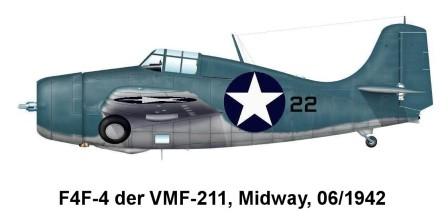 |
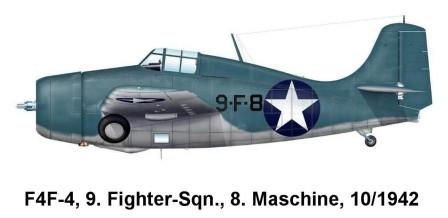 |
|
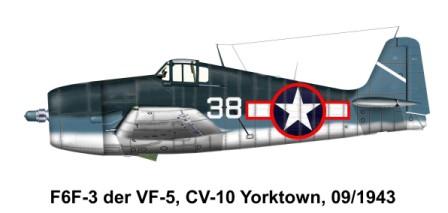 |
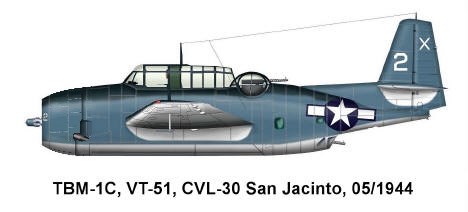 |
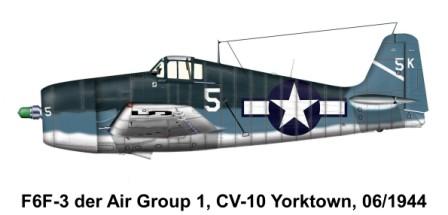 |
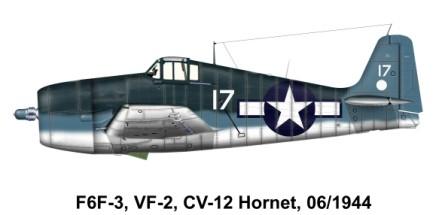 |
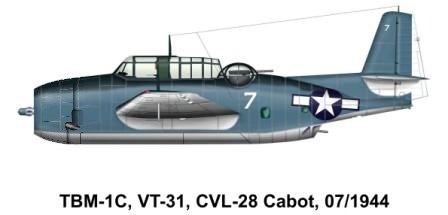 |
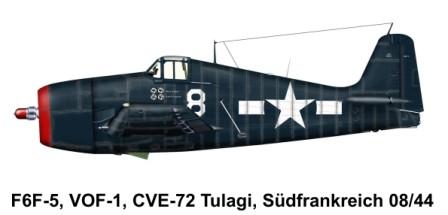 |
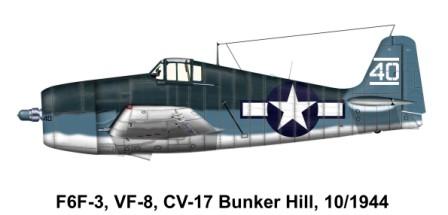 |
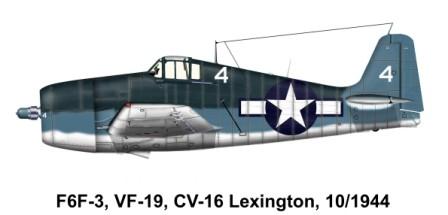 |
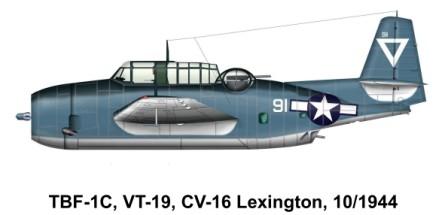 |
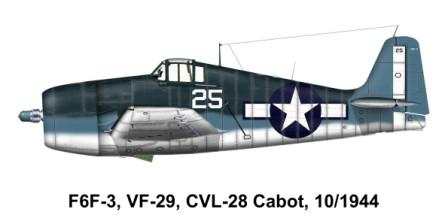 |
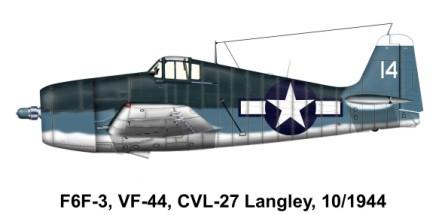 |
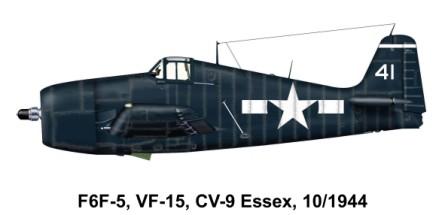 |
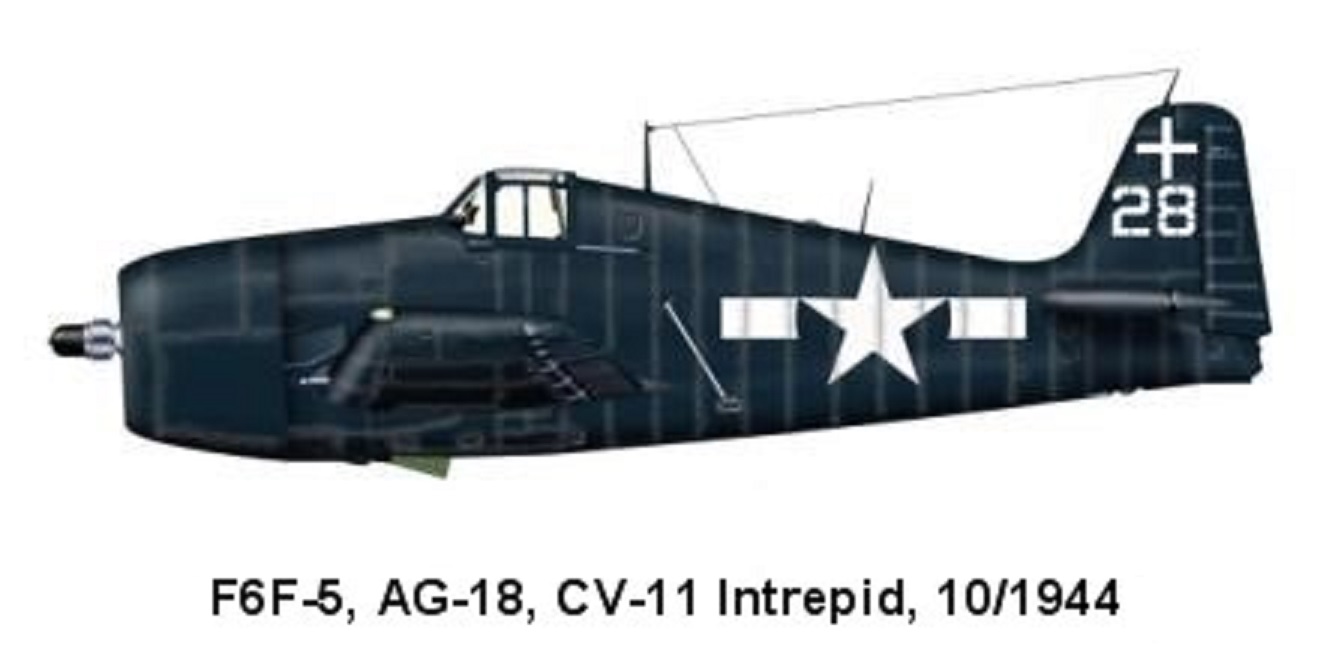 |
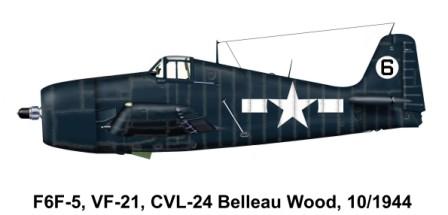 |
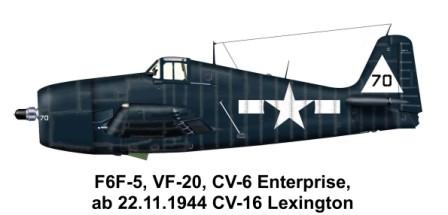 |
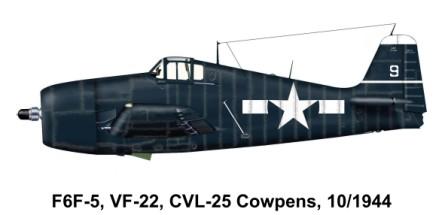 |
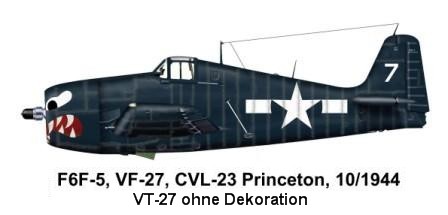 |
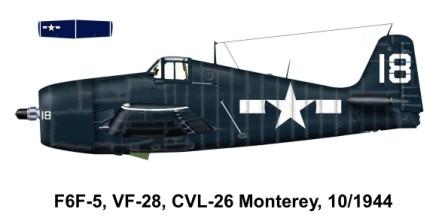 |
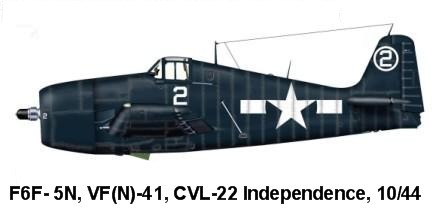 |
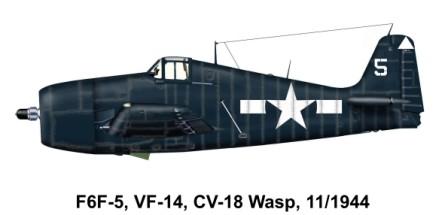 |
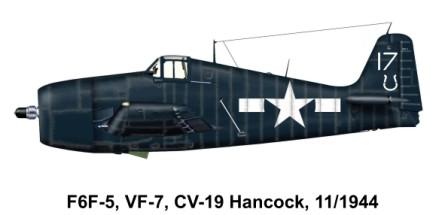 |
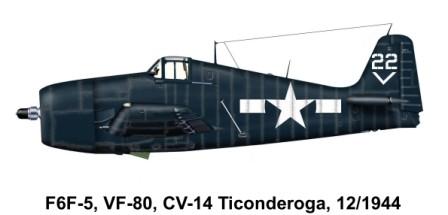 |
|
|||||||
|
|||||||
|
All photos US National Archives resp. US Navy |
|
Text: Copyright Wilfried Eck |